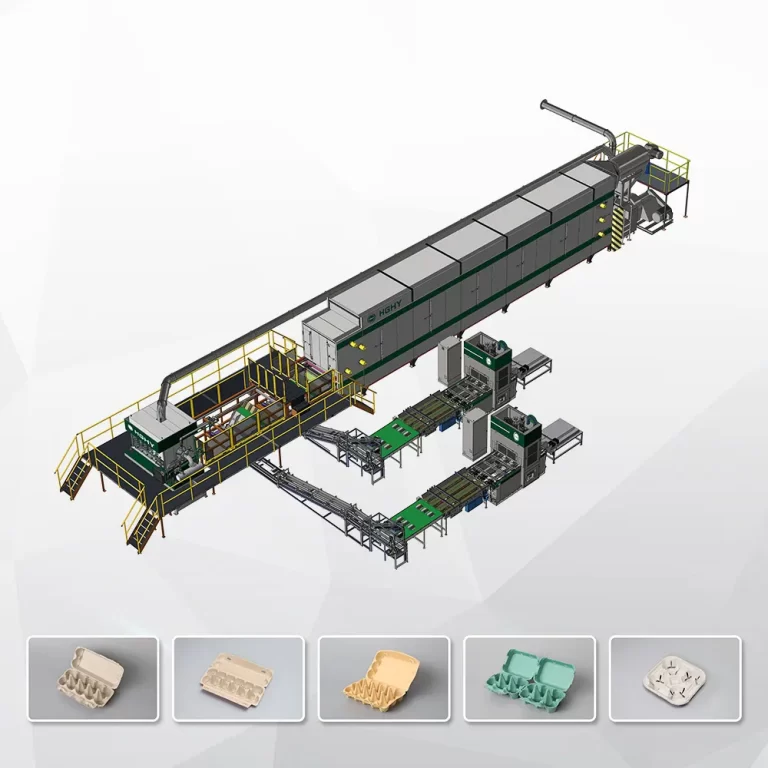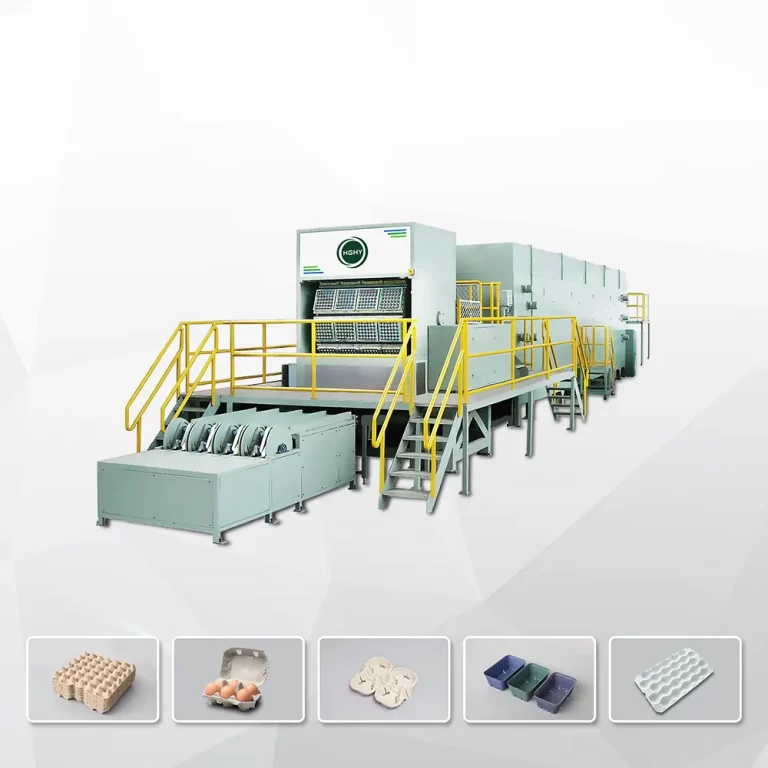Egg trays are essential in the poultry industry for transporting and storing eggs safely. The production of egg trays has evolved significantly, primarily through the use of specialized machinery known as egg tray machines. Understanding the production process of these machines, as well as how to choose a good egg tray production line, is crucial for businesses looking to invest in this equipment.
Production Process of Egg Tray Machines
The production of egg trays typically involves several key steps:
1. Raw Material Preparation
The primary raw materials used in making egg trays are waste paper products, such as newspapers, cardboard, and other paper scraps. The quality of the raw materials directly influences the strength and durability of the trays. Companies often conduct a preliminary sorting and shredding process to ensure uniformity and cleanliness.
2. Pulping
The shredded paper is then soaked in water to create a pulp. This is done using a pulping machine, which mixes the paper with water and breaks it down into a slurry. Additives, such as dyes or chemicals for strength enhancement, may also be incorporated during this stage.
3. Molding
Once the pulp is ready, it is fed into a molding machine. The slurry is poured into molds that shape the trays. The molds are typically made of metal and come in various sizes to accommodate different types of egg trays. This step involves both the formation of the tray and the initial drying process.
4. Drying
After molding, the wet trays are transferred to a drying section. This can be done through natural drying, where trays are air-dried, or using drying machines that use heat to speed up the process. Proper drying is crucial to ensure that the trays maintain their shape and structural integrity.
5. Finishing and Quality Control
Once dried, the trays undergo a finishing process that may include trimming excess pulp, quality checks, and packaging. This stage ensures that the trays meet the required standards for durability and appearance.
6. Packaging and Shipping
Finally, the finished trays are packaged for shipping to customers. This involves stacking the trays in a manner that minimizes damage during transportation.
How to Choose a Good Egg Tray Production Line
Investing in an egg tray production line is a significant decision that requires careful consideration. Here are some key factors to keep in mind:
1. Capacity and Output
Assess your production needs based on the scale of your business. Different machines offer varying capacities, so it’s essential to choose one that aligns with your expected output. Consider future growth as well.
2. Quality of Raw Materials
The machine should be compatible with the type of raw materials you plan to use. Ensure that it can handle various paper types and produce high-quality trays.
3. Technology and Automation
Modern egg tray machines often come with advanced technology that enhances efficiency. Look for features like automatic pulp feeding, mold changing, and drying systems that can streamline operations and reduce labor costs.
4. Energy Efficiency
Energy consumption can significantly impact operating costs. Opt for machines that are designed for energy efficiency, as this will lead to long-term savings.
5. Durability and Maintenance
Select a production line built with high-quality materials to ensure longevity. Additionally, consider the ease of maintenance and availability of spare parts, which can reduce downtime.
6. Supplier Reputation and Support
Research suppliers thoroughly. A reputable supplier should offer reliable customer support, training, and after-sales service. Reading customer reviews and case studies can provide insights into the performance and reliability of the machinery.
7. Cost vs. Value
While it’s tempting to go for the lowest price, consider the overall value. A more expensive machine that offers better efficiency, lower maintenance costs, and higher output can be a better investment in the long run.
HGHY Egg Tray Making Machines
Features and Capabilities
Production Capacity: HGHY offers a range of egg tray machines with varying production capacities. The machines can produce anywhere from 1,000 to 7,000 egg trays per hour, depending on the model. This wide range makes them adaptable to different business scales, from small enterprises to large industrial operations.
Automation: HGHY machines are typically highly automated, reducing the need for manual labor and increasing production efficiency. Automation also ensures consistent quality and reduces the chance of defects.
Energy Efficiency: Many HGHY models are designed to be energy-efficient, incorporating advanced technologies that minimize power consumption and reduce operational costs.
Suitability for Different Business Scales
Small to Medium Enterprises (SMEs): For smaller businesses or startups, HGHY offers models with lower production capacities that are cost-effective and easier to operate. These machines are ideal for businesses in regions where demand is moderate, or for those just entering the market.
Large Enterprises: Larger models are suitable for established companies with high production demands. These machines can handle large volumes and are often part of a fully automated production line, which is essential for maintaining high output and meeting market demands.
Conclusion
The production of egg trays is a complex but highly efficient process, facilitated by advanced egg tray machines. When choosing a production line, consider your specific needs, the quality and efficiency of the machinery, and the reputation of the supplier. With the right equipment, you can ensure the safe transportation and storage of eggs, ultimately contributing to the success of your poultry business.



